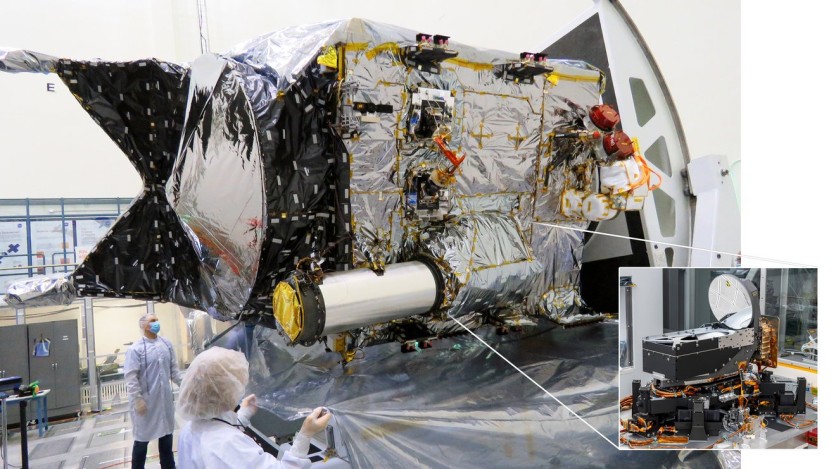NASA is utilizing advanced laser communication technology for its upcoming Psyche asteroid mission, which aims to enhance data transmission capabilities beyond the current radio frequency systems in space.
Scheduled to launch in the coming fall, NASA's Deep Space Optical Communications (DSOC) project will be a technology demonstration to test the potential of lasers in speeding up data transmission. This could greatly benefit future missions, including the agency's ambition to send astronauts to Mars.

The DSOC Project of NASA
The DSOC initiative encompasses a near-infrared laser transceiver integrated into NASA's Psyche mission intended to investigate a metal-rich asteroid.
Over the initial two-year phase of the mission, the transceiver will establish communication with ground stations in Southern California. It will involve testing of diverse elements such as sensitive detectors, powerful laser transmitters, and techniques for deciphering signals from deep space.
NASA's keen interest in optical communication stems from its potential to outpace the data transmission capacity of radio waves, which have been a staple in space communication for an extended period.
Although both radio and near-infrared laser communication employ electromagnetic waves, near-infrared light is more adept at efficiently packaging data, according to the space agency.
Abi Biswas, DSOC's project technologist at NASA's Jet Propulsion Laboratory, noted that the project aims to demonstrate a data return capacity 10 to 100 times greater than current radio systems used in space.
As more deep space missions are planned, data production will substantially increase, including complex measurements, high-definition images, and video. NASA noted that experiments like DSOC are crucial in advancing technologies that can be regularly employed by spacecraft and ground systems.
Trudy Kortes, director of the Technology Demonstrations Missions program at NASA Headquarters, emphasized the significance of DSOC in advancing communication technology to support the agency's future endeavors.
"DSOC represents the next phase of NASA's plans for developing revolutionary improved communications technologies that have the capability to increase data transmissions from space - which is critical for the agency's future ambitions," said Kortes.
Read Also : NASA James Webb Unveils Fascinating New Facts About 'Earendel,' the Farthest Star Ever Spotted
Inside the Psyche Mission
Within the Psyche mission, the transceiver is equipped with multiple technologies, including a photon-counting camera affixed to a telescope. This telescope independently aligns with a potent high-power near-infrared laser uplink emitted from JPL's Table Mountain Facility.
Additionally, the transceiver employs its own near-infrared laser to dispatch data to Palomar Observatory. It addresses obstacles like spacecraft vibrations during this data transmission process.
Jason Mitchell, program executive for NASA's Space Communications and Navigation program, noted that the powerful uplink laser plays a critical role in demonstrating higher data rates to spacecraft, with upgrades to ground systems facilitating optical communications for deep space missions.
The DSOC project brings together various cutting-edge technologies, from powerful lasers to sophisticated detectors, to ensure efficient data transmission over vast distances.
Despite the challenges posed by distance and lag in communication, the project aims to pioneer advancements that could transform space communication capabilities.
Related Article : NASA's Artemis Missions for Moon Settlement to Open $100 Billion Market for Private Companies

ⓒ 2026 TECHTIMES.com All rights reserved. Do not reproduce without permission.




